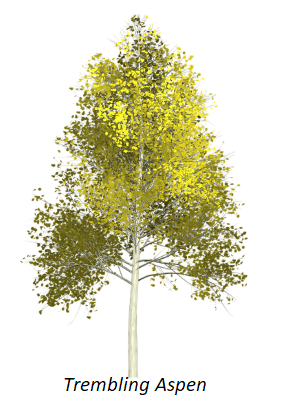
Revolutionary Research

Andrew Mullen, CEO
(image: Charco website)
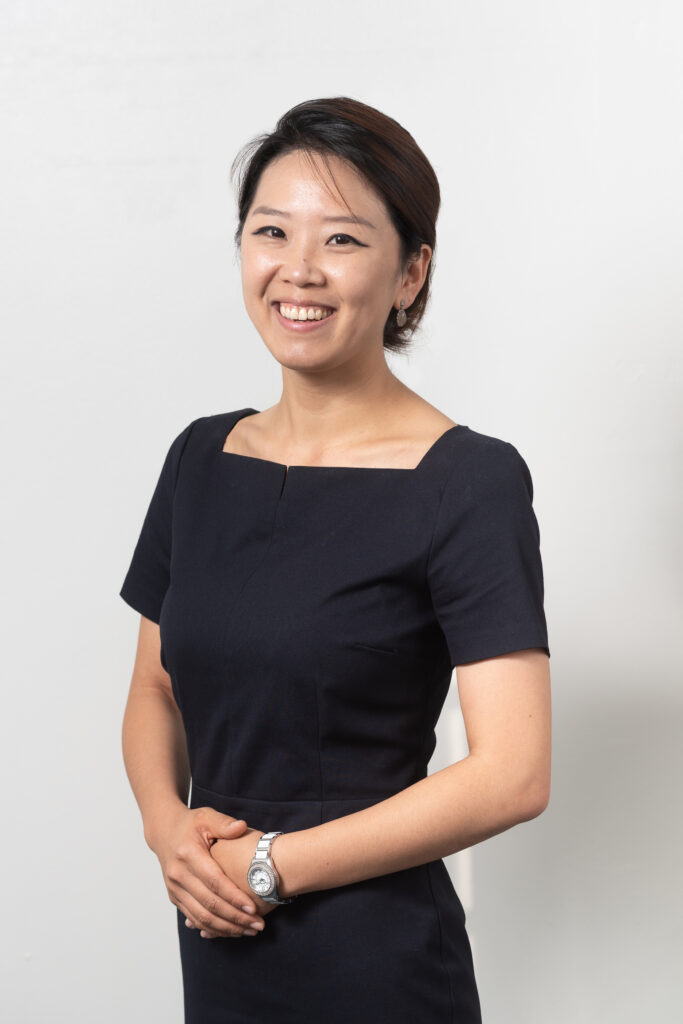
Lucy Jung, founding CEO
Charco Neurotech was founded by a team of designers, engineers, and clinicians with the mission to help people Who suffer from long term health conditions. Our flagship innovation, the CUE1 device, originated as a project from the Innovation Design Engineering course at Imperial College London and the Royal college of Art. Supported by these universities and the University of Cambridge, we have gradually been able to evolve from a university project into a small company, whilst maintaining our core goal; to improve quality of life and bring smiles back for people with long-term conditions.
CUE1 has been developed to use focussed vibrotactile stimulation combined with the phenomenon of cueing to relieve the movement symptoms of Parkinson’s. These two phenomena have also been shown to improve other conditions such as multiple sclerosis, spinal cord injury, stroke and more. One condition that has not received much attention in the scientific literature relating to these phenomena however is orthostatic tremor (OT). Members of an OT facebook group recently came across CUE1 and were intrigued to see if it might help their condition. After meeting with the group, the Charco team, with the help of some of its members, arranged to visit one volunteer with OT to carry out some initial investigative testing with CUE1.
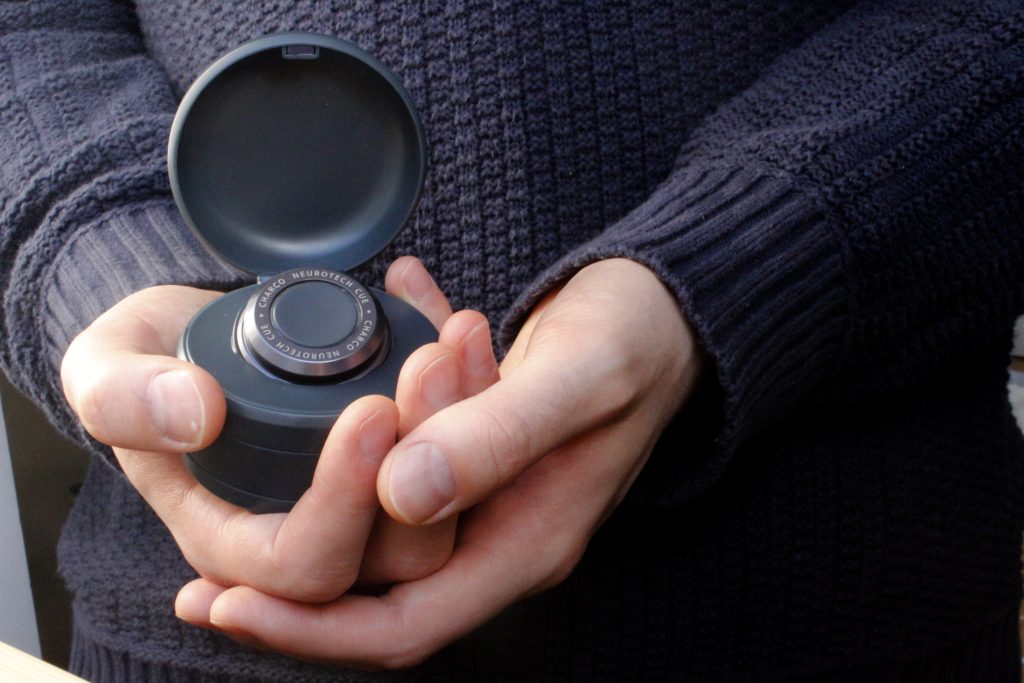
The volunteer’s OT symptoms consist of freeze of gait (FOG), decreased balance and stability when standing with her feet together, resting arm tremors as well as the characteristic standing leg tremors of OT. She shared how these symptoms make simple daily tasks very challenging, such as waiting in queues when shopping or climbing stairs. She often has to sit down when standing for too long due to her tremor and fatigue. She does not experience on/off periods, where symptoms fluctuate regularly throughout the day, but instead finds that her symptoms will gradually worsen towards the end of the day as tiredness sets in.
The volunteer is also a former physiotherapist and currently a clinician and so was able to suggest the best ways to measure her symptoms and any affect CUE1 had on them. The testing methods she chose included Single Leg Stand, Tandem Stand, Timed Up and Go (TUG), Tandem Walking, Standing with feet together and Turn on the Spot. The results showed a 31.2% increase in time she was able to balance on one leg, along with a 65.3% increase when standing with her feet together. This represented a scientifically significant improvement in the volunteer’s balance as well as her freezing episodes, shown by a 16.8% decrease in the time taken to turn on the spot. The results from these tests would suggest an overall improvement in balance and mobility which would extend to many other everyday tasks and hopefully give the volunteer an improved daily quality of life.
The volunteer felt that placing her hand on the CUE1 device whilst it was attached to her sternum gave a much more powerful vibration, that she felt was carried through her arm and helped her more. Although the testing was relatively informal and on only one person, we believe the results hold great promise for the effectiveness of CUE1 in helping the symptoms of OT, and warrant further investigation!
We continue to work our hardest to bring CUE1 to all those who need it, both with Parkinson’s and other compatible conditions as soon as we can. While it is not yet available, we expect to launch it in the UK and EU later this year. We hope you are as excited about the possibilities for CUE1 as we are, and if you would like to stay in touch with us, please sign up to our newsletter to keep updated on all our activity and news here: https://charconeurotech.com/. If you have any questions, please do contact us on info@charconeurotech.com.
We would want to thank OT group for participating in the testing, despite the cold weather and testing being long. Thank you so much for contributing to the research.
On Friday, 2nd August 2024, Lucy Jung attended her last meeting as CEO of Charco Neurotech. We are all sad to say goodbye to this dedicated, committed team member who has helped the Orthostatic Tremor UK Group in many ways. Thank you, Lucy, for attending our meeting in Birmingham and giving us your time and support to many of our members.
Andrew Mullen was introduced as the new CEO and he has promised to continue working with the Orthostatic Tremor Group.
Cue1 Initial Trial, by Anita Gale
At our conference in October 2023, I gave a presentation about the trial and this is a short summary.
Over 35 people with OT have been given a Cue1 on the trial.
Feedback has shown that even when you have two similar people, of a similar age, with a similar time from diagnosis and similar levels of fitness and exercise, the Cue can make a difference for one person but not for another.
Majority of people are wearing the Cue on their sternum. If they are wearing it elsewhere, it’s often due to a reaction to the patches. On the wrist, as you would wear a watch, held in place with a sports band or wrist support has worked for some. Female participants have also tucked it into their bra with similar results.
This is a sample of the responses I received when I asked :
If the Cue1 helps you, please give as many details and examples as you can.
- I feel it takes the edge of the tremor.
- The Cue1 has definitely helped when waiting, queuing in shops and supermarkets, whilst generally going about my day to day life I would even go as far as to say it seemed to give me the ability to do things like getting dressed without being worn out.
- Improvement to energy and tolerance. This had a knock-on effect giving improved patience and decreased anxiety. Picking items up off the floor was no longer an ‘age’ issue. After a shower I used to have to rest before getting dressed but since using CUE1 no rest is needed.
- It means I can stand for 4 minutes instead of 1, without having to sit down.
- Since wearing my CUE1 I can now have a quick shower without a tremor, I can stand in a queue with out trepidation for anything up to 15 minutes . I can stand still in the street for a few minutes to chat. My legs feel stronger. I feel more confident. I feel less stressed. I like the comfort of the vibration, it’s reassuring.
From conversation I have had with other Cue users I think it’s fair to say that some days you feel it gives you a lot of support whilst at other times you are not sure if it does anything.
Stress or illness seem to reduce or obliterate the help that the Cue gives us. Several people commented along the line of “It works best in my own environment, when I’m relaxed and at ease”.


Participants have expressed their thanks to Charco for all the help and support they have given us. One person echoed the thoughts of others when they said “I’m so pleased to have been given the opportunity to try it out”
In 2024 the trial moved onto a second stage, which is clinical testing.
There is an OT device waiting list on the Charco website, which you will need to put your name on if you would like a Cue in the future.
Chris Cardus showed us how well he is getting on with his Cue, by getting out of his wheelchair and walked a short distance! We were all amazed. He feels that he has returned to how he was 8-10 years ago and it has made a huge impact on his life. Chris talked about how much his Cue is helping him, especially as it has enabled him to go abroad on holiday. He is hoping that a waterproof version can be developed to enable him to get into and out of pools and the sea easier, as well as enabling him to stand in the shower. He thanked Charco for making such a difference to his life.
Anita Gale
Sadid Hoque

My name is Sadid Hoque, and I am a first year medical student at Barts and The London School of Medicine. I was diagnosed with multiple sclerosis in 2020, and ever since have been very interested in neurology. My personal diagnosis has helped me understand the difficulties of living with chronic condition and the importance of not letting the condition define you. I would like to raise awareness and help others with chronic conditions.
I first heard about orthostatic tremor (OT) when I entered the patient group pairing scheme of the Student Voice prize which is run by the ‘Find A Cure’- a charity for rare conditions. I arranged a phone call with my patient partner, Alyson, and before the call, I decided to do some research on the condition. I was surprised to see how little information was available. Most of the articles said the same thing in terms of symptoms but the sections on causes and treatments were very short. However, they all expressed the massive impact that OT has on the lives of people living with it and their struggles.
The Student Voice Prize required me to write an essay comparing the health inequalities faced by those with rare diseases and compare it to the treatment received by those with a more common condition, in the same speciality. I chose to compare OT with Parkinson’s disease. The difference in the amount research papers and projects was startling- there is barely any research going into OT. As it is so rare, researching it is very difficult but that’s why more effort is needed. OT is a life changing condition and extremely debilitating, so I was very upset to find out about the lack of research.
Additionally, talking to doctors made me aware of how rare the disease is- only neurologists had heard of it and even then, they saw very few cases of it. Due to its rarity, there is very little awareness of the condition, not just within society but also within healthcare professionals. This is has resulted in patients having bad experiences in hospital and feeling unsatisfied with their doctor. What shocked me was the fact that some doctors told patients that it was all in their heads.
Hasini Chandrasekera
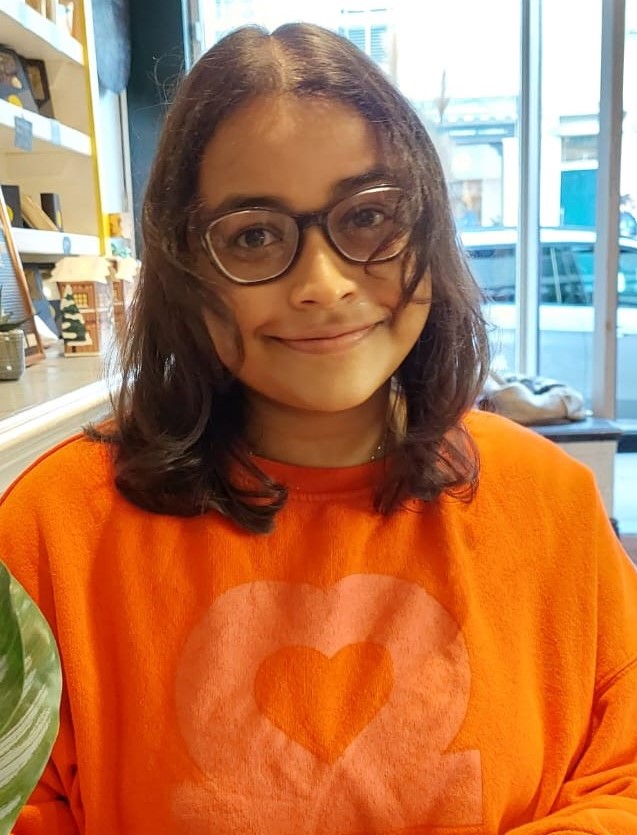
My name is Hasini Chandrasekera and I am a 4th-year medical student from the University of Buckingham. I am from Sri Lanka and I came to England to pursue my higher studies.
My primary aim right now is to go into each rotation I have with an open mind and see how I find it. This way, I realised my interests lie in surgical specialities, psychiatry and neurology as well.
One of my main priorities throughout Medical School is to talk to as many patients as I can and see how they cope outside a healthcare setting in order to gain a much better appreciation of the struggles patients face on a day-to-day basis as it can be very easy for patient’s struggles to be dismissed sometimes.
I am very keen on learning about rare diseases and have signed up for the patient pairing programme in previous years as well in order to talk to patients about their diagnosis, learn more about what their experiences were like with the healthcare system and also gain an appreciation of how they are managing with their day to day life.
I would like to thank Alyson for having a very insightful chat with me about Primary Orthostatic Tremor and how she has been doing as well. This experience taught me so much and I aim to carry the lessons I learnt from this experience throughout my career.
Dunia Mangal
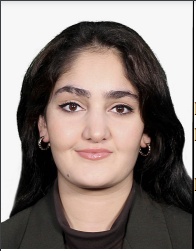
Dunia Mangal
Currently an undergraduate student at Kings College London University, studying Biomedical Sciences. I am interested in pursuing a career in healthcare, whether that is research or working in hospitals around the world, but would also like to have a platform to be able to discuss healthcare education and innovative research.
Breaking boundaries in education always intrigues me, hence why I want to begin a initiative in London Universities Faculties of Life Sciences and Medicine, and hopefully other universities can adopt this, to begin a programme allowing students to learn and understand more about rare diseases. Hopefully this can develop into a tangible book or E-book that students can use, especially those progressing further
into careers in healthcare.
Before being a student, I also love to be an athlete. This is definitely important for me, as I need to relieve my stress from University studies somehow. When I’m not drowned in books, I love to take part in Taekwondo, cycling and baseball. I am also obsessed with cooking, especially during lock-down, mainly due to the Gen-Z trends of baking banana breads, luckily I wasn’t one of those following the trend to buy tonnes of toilet paper. I cook when I can as I live at home for University, and in the evenings, enjoy listening to podcasts and reading any books by Tolstoy.
What I learnt from my discussion with Alyson about Orthostatic Tremors
One of the most informative and interesting conversations I have been involved in, which had me continuing to research even after the zoom call, about OT a rare progressive neurological condition, with no known cure and the work of the Orthostatic Tremor Support Group UK. For me what stood out the most was the inequalities faced by people with OT, whether its healthcare professionals not looking out for the key symptoms that distinguishes OT from essential tremors such as an unusual gait, unable to stand unsupported, curled toes, by using a stethoscope placed on the legs revealing the high frequency oscillation.
Also, the lack of support received after diagnosis. It showed me how a 1 hour conversation can truly change the course of life for many people as the information I received in terms of protocols to take for diagnosis, how exercise can help with relieving stress which can trigger the tremors, if all of this was taught to science and medical students, would truly begin a cycle to improve the quality of life for those within rare diseases. I was also inspired by Alyson as we spoke about her day-to-day struggles and how as an advocate for the OT Support Group UK was involved in the creation of the information booklet. This was something I showed to my personal university tutor, who even asked for a copy of their own to learn more about OT.
Trembling with Anger, by Sadid Hoque
The NHS website defines health inequalities as “The unfair and avoidable difference in health across the population and different groups within society” (Definitions of Health inequalities, second paragraph, NHS England Website). The King’s Fund describes the inequalities in health as the “differences in care that people receive and the opportunities that they have had to live healthy lives.” (What are health inequalities? first paragraph, The King’s Fund website.)
Both websites imply the fact that there are multiple factors contributing to inequality, including disabilities, socioeconomic status and race. This essay examines and reflects the inequalities faced by those with rare diseases as compared to more common conditions and with respect to society’s treatment of people with chronic illnesses.
An example of a common disease is Parkinson’s disease (PD). This is a common movement disorder with plenty of research and funding behind it. There is plenty currently known about the disease from its clinical features to pathophysiology to treatment. As of the 14th of November 2021, there are 149,552 literature articles on the disease in PubMed. This suggests the amount of time and focus going into researching the disease. Furthermore, there are many campaigns and charities advocating and raising awareness to combat stigmas faced by these patients.
These stigmas can be grouped into 4 different core types: stigma from symptoms, stigma linked to problems in communication and relationships, social stigma from shared perceptions and the stigma of the caregiver (Maffoni, M. et al 2017). Maffoni elaborates the concept of stigma is a social one and refers to the concept as one describing another subject as bad or undesired. This leads to patients with the disorder experiencing discrimination from others who are poorly educated on the condition or are unaware of it. This could be in social settings such as group gatherings where people fail to recognise if the patient needs extra aid or not to being unable to access certain places or do certain jobs. This affects the mental health of the patients and may lead to them feeling unwanted and thus not having as high a quality of life as they could be living.
However, more and more people are becoming aware of the condition, due to it being so common- it has an incidence of 1 in 500 (Parkinson’s disease overview, “Who’s affected?”, NHS England website, no date) – making it the second most common neurodegenerative disorder (Zhao Y et al, 2020). This has resulted in more data being available and therefore more knowledge about it, which makes diagnosis easier. While there is no cure, there has been many drugs on the market used to control the symptoms. There is also support from occupational therapists and physiotherapists in order to help the patient holistically.
There is also a lot of research going into Parkinson’s disease such as the PREDICT-PD study, which is a study funded by the charity Parkinson’s UK. The study aims to look at 10000 people who do not have the disease in order to find early signs that someone is developing Parkinson’s disease. There have also been many studies into the genetics behind the disease as well as its epidemiology (Zhao, Y et al 2020).
In comparison, rarer neurological disorders such as orthostatic tremor experience inequalities in treatment from multiple different aspects. Orthostatic tremor (OT) is a rare condition that is life changing and may sometimes be worse than life threatening conditions. I first learned of the condition when I was paired with a patient who had the condition. This introduced me to the Orthostatic Tremor Group- a support group and charity that started off with just around 10 members in 2004 and is the only support group of its kind in the UK.
People with OT have experienced many inequalities throughout their journey to be diagnosed and afterwards as well. One of the most common experiences that they reported was their GP having no knowledge of OT (87% of those who answered the survey conducted by the OT Group said that their GP didn’t know about OT) (Withers, G. 2021). This led to a delay in their diagnoses and caused them extra stress and worry.
Another common experience for many members was to be told that it was “all in their head” or that it was due to a phobia or some form of psychosomatic illness, which delayed their diagnosis and cause them to go through a long period of time- 20 years or more in some cases, without being diagnosed. During the meeting with the members, most of them agreed that not knowing made them feel more worried, causing their mental health to decline.
In a survey by the group, a significant proportion of those who responded reported they had depression. This was compounded with the fact that many felt excluded socially due to family and friends not understanding their needs properly or being unable to provide the correct assistance. The COVID-19 pandemic has further worsened the feeling of isolation as they weren’t able to see any friends or socialise- all the in-person meetings that the group had planned were cancelled. However, with online platforms such as Zoom, the social aspects of the group could be maintained. The increased use of telemedicine has also helped reduce the health inequalities by making it easier for OT patients to speak to doctors.
Some members of the group also experienced quite difficult times when they were in hospital. AS OT is very rare, many people don’t know how it presents, even within the medical field. The lack of knowledge around the condition has resulted in a worse quality of care. One person had fallen and broken their ankle and needed physiotherapy, but the physiotherapist had refused to give them a rollator, which they required to walk, and tried to force them to use crutches even after they explained what OT is. This caused the patient to have a very stressful and frustrating time which affected their quality of care. Similar experiences were common among the support group- some even going to say that they don’t feel happy with their current doctor.
This example goes to show the importance of raising awareness and letting others know about the condition and how they can help. However, as it is so rare, there is very little data on OT and the causes have yet to be identified as well as any treatment plan. The current treatment plan is just to help patients find ways to cope with the tremor. Due to the lack of data and research funding for OT, no drug has been made that works for OT. Instead, drugs that are used for PD are used for OT with little effect.
Many pharmaceutical companies are cutting their budget for neuroscience research due to it returning very low profits. Some examples include Novartis closing its neuroscience facility and GlaxoSmithKline and AstraZeneca closing major parts of their neuroscience facilities (Wegener, G. and Rujescu, D. 2013.) This makes the chance for finding a cure for the disease much slimmer especially when compared to other common illnesses. Thus, patients with neurological conditions experience inequalities in terms of finding effective drugs- and those with rare conditions suffer even more.
One of the greatest reasons that people with rare conditions face health inequalities is that there is such a low number of patients that it is very hard to do any epidemiological studies. Any studies that are conducted have a very low sample size for example, one of the largest studies on OT that I found only had 219 entries (J, Benito-Leon and A, Domingo-Santos, 2016). Having little data means that there is not much known in terms of the disease mechanism and progression which leads to doctors being unable to find a suitable management plan. It is further complicated by the fact that there is a lot of variety in individual progression and efficacy of drugs used. Some patients are on medications such as Clonazepam and have found it to be helpful while others reported no change on symptoms or even worsening symptoms. Additionally, due to its rarity, there is little awareness among clinicians other than neurologists and this makes it harder for OT patients to get holistic treatment. Many people with rare diseases will experience some form of health inequality, whether it be a delay in diagnosis or a poorer quality of care.
Many people with rare diseases will experience some form of discrimination. Many people with rare diseases will experience some mental health struggles – leading to poorer health. All these difficulties come down to the fact that there is not enough funding and time spent on research for rare diseases and the lack of awareness about them. Therefore, we need to raise awareness of rare conditions and gain more knowledge in order to reduce health inequalities.
References
- Benito-León, J. and Domingo-Santos, A. (2016). Orthostatic Tremor: an update on a rare entity. Tremor and other hyperkinetic movements (New York, N.Y). [online]. Available at: https://pubmed.ncbi.nlm.nih.gov/27713855/ [Accessed 14/11/2021].
- Maffoni, M. et al. (2017). Stigma Experienced by Parkinson’s Disease Patients: A Descriptive Review of Qualitative Studies. Parkinson’s Disease, [online]. Available at: https://pubmed.ncbi.nlm.nih.gov/28243481/ [Accessed 14/11/2021].
- Wegener, G. and Rujescu, D. (2013). The current development of CNS drug research. International Journal of Neuropharmacology. 16(7). p1687-1693. [online] Available at: https://academic.oup.com/ijnp/article/16/7/1687/713860?login=true [Accessed 15/11/2021].
- Williams, E. Buck, D. and Babalola, G. (2018) What are health inequalities?. [online]. Available at: https://www.kingsfund.org.uk/publications/what-are-healthinequalities [Accessed 14/11/2021].
- Withers, G. (2021). OT UK Support Group Questionnaire 2019. Orthostatic Tremor Newsletter.
- Zhao, Y. et al. (2020). The role of genetics in Parkinson’s disease: a large cohort study in Chinese mainland population. Brain [online]. 147(7), p2220-2234. Available at: https://academic.oup.com/brain/article/143/7/2220/5866165?login=true [Accessed 14/11/2021].
